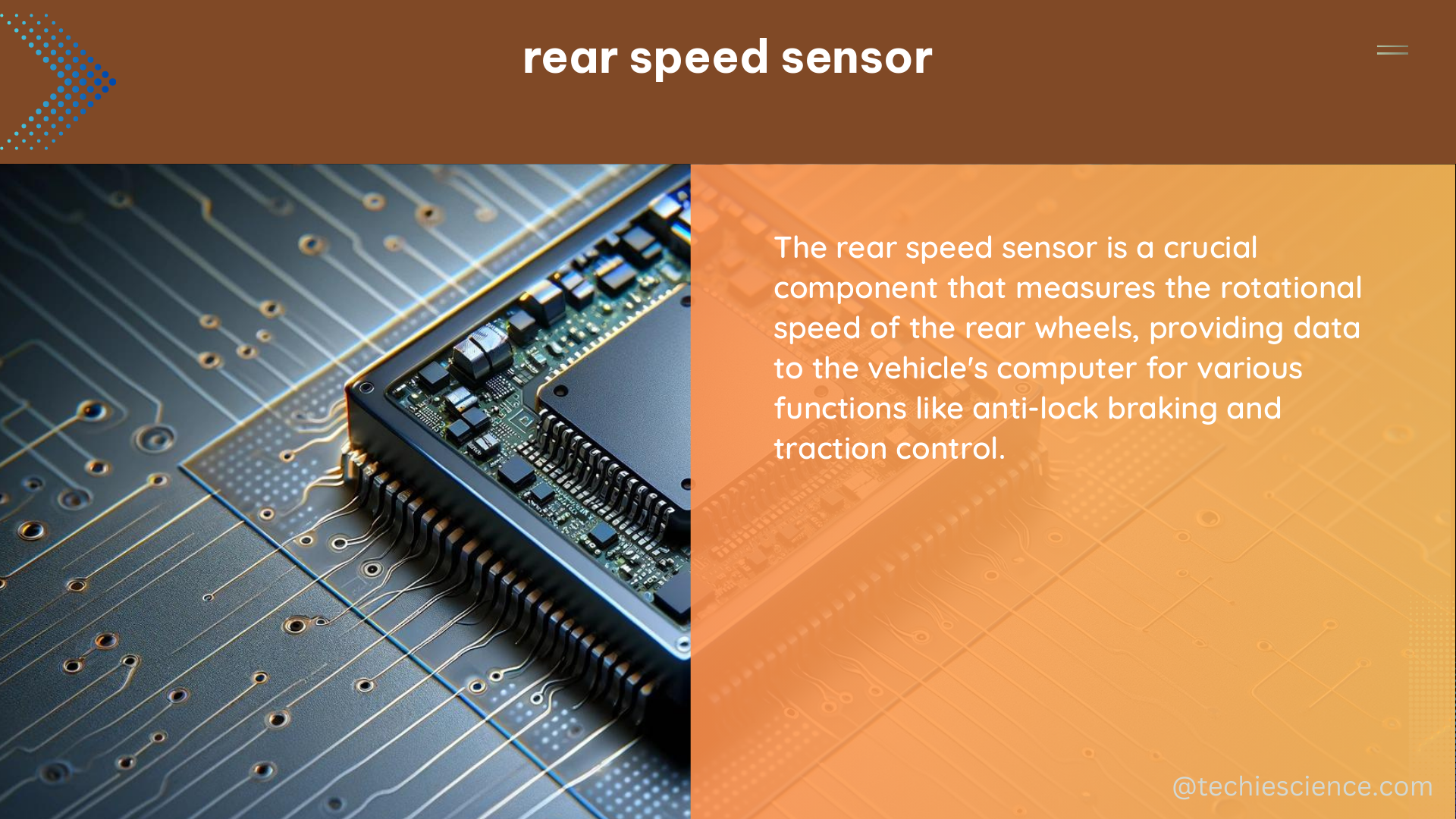The rear speed sensor, also known as the wheel speed sensor, is a critical component in a vehicle’s Anti-lock Braking System (ABS) and other driving assistance systems. It plays a vital role in detecting the wheel speed and providing this information to the control units, enabling these systems to function effectively.
Understanding the Rear Speed Sensor
The rear speed sensor is positioned directly above the impulse wheel, which is connected to the wheel hub or drive shaft. As the impulse wheel rotates, it induces a change in the magnetic field, generating a measurable alternating voltage in the sensor’s winding. The frequency and amplitude of this alternating voltage are directly proportional to the wheel speed, providing valuable data for the vehicle’s systems.
Inductive-Passive Sensors
One type of rear speed sensor is the inductive-passive sensor, which does not require a separate power supply from the control unit. These sensors are self-sufficient and reliable, making them a popular choice in modern vehicle designs.
Measuring the Rear Speed Sensor Output

To measure the output of a rear speed sensor, one approach is to use an interrupt and an internal counter on a microcontroller, such as the Arduino Uno. This method allows for counting the pulses and deducting the frequency of the signal, which can then be used to calculate the wheel speed.
Signal Conditioning
It’s important to note that signal conditioning may be necessary to remove spikes and noise, and to ensure that the amplitude is within a specific voltage range. This can be achieved through various techniques, including filtering and amplification.
Frequency Measurement
The frequency of the rear speed sensor’s output signal is directly proportional to the wheel speed. By measuring the frequency, you can calculate the wheel speed using the following formula:
Wheel Speed (rpm) = (Frequency (Hz) × 60) / (Number of Teeth on Impulse Wheel)
For example, if the rear speed sensor has an output frequency of 100 Hz and the impulse wheel has 60 teeth, the calculated wheel speed would be:
Wheel Speed (rpm) = (100 Hz × 60) / 60 = 100 rpm
Amplitude Measurement
The amplitude of the rear speed sensor’s output signal can also provide valuable information. A typical inductive-passive sensor may have an output voltage range of 0.5 to 5 volts, with the amplitude varying based on the wheel speed and the sensor’s proximity to the impulse wheel.
By monitoring the amplitude, you can detect potential issues, such as a faulty sensor or improper sensor alignment. Significant changes in the amplitude may indicate a problem that requires further investigation.
Diagnostic Techniques
Diagnosing issues with the rear speed sensor can involve various techniques, including:
- Visual Inspection: Check the sensor for physical damage, proper installation, and correct alignment with the impulse wheel.
- Resistance Measurement: Use a multimeter to measure the resistance of the sensor’s winding, which should typically be within the range specified by the manufacturer.
- Voltage Measurement: Measure the sensor’s output voltage while the wheel is rotating to ensure it falls within the expected range.
- Frequency Measurement: Use an oscilloscope or a frequency counter to measure the output signal’s frequency and compare it to the expected values based on the wheel speed and the number of teeth on the impulse wheel.
- Sensor Replacement: If the sensor is suspected to be faulty, replace it with a new one and observe the system’s behavior.
Conclusion
The rear speed sensor is a crucial component in a vehicle’s safety and driving assistance systems. Understanding its operation, measuring its output, and diagnosing potential issues are essential skills for anyone working on vehicle diagnostics and maintenance. By following the techniques and guidelines outlined in this comprehensive guide, you can unlock the secrets of the rear speed sensor and ensure your vehicle’s systems are functioning at their best.
References:
- Hella Technical World – Check and Change ABS Sensor
- Hella-Pagid – Brake Disc ABS PAGID
- Arduino Forum – ABS Wheel Speed Sensor Measuring Vehicle Speed

The lambdageeks.com Core SME Team is a group of experienced subject matter experts from diverse scientific and technical fields including Physics, Chemistry, Technology,Electronics & Electrical Engineering, Automotive, Mechanical Engineering. Our team collaborates to create high-quality, well-researched articles on a wide range of science and technology topics for the lambdageeks.com website.
All Our Senior SME are having more than 7 Years of experience in the respective fields . They are either Working Industry Professionals or assocaited With different Universities. Refer Our Authors Page to get to know About our Core SMEs.